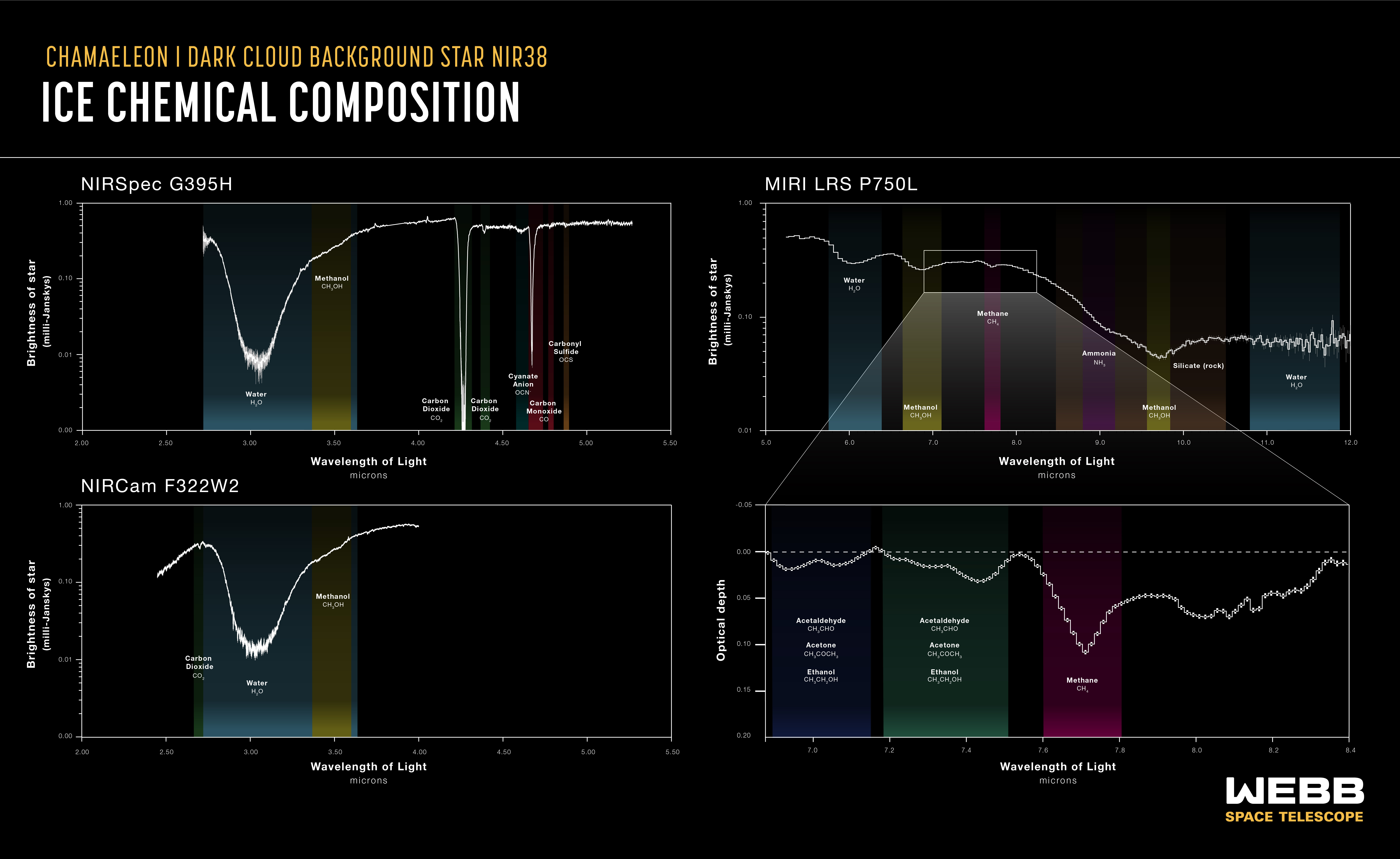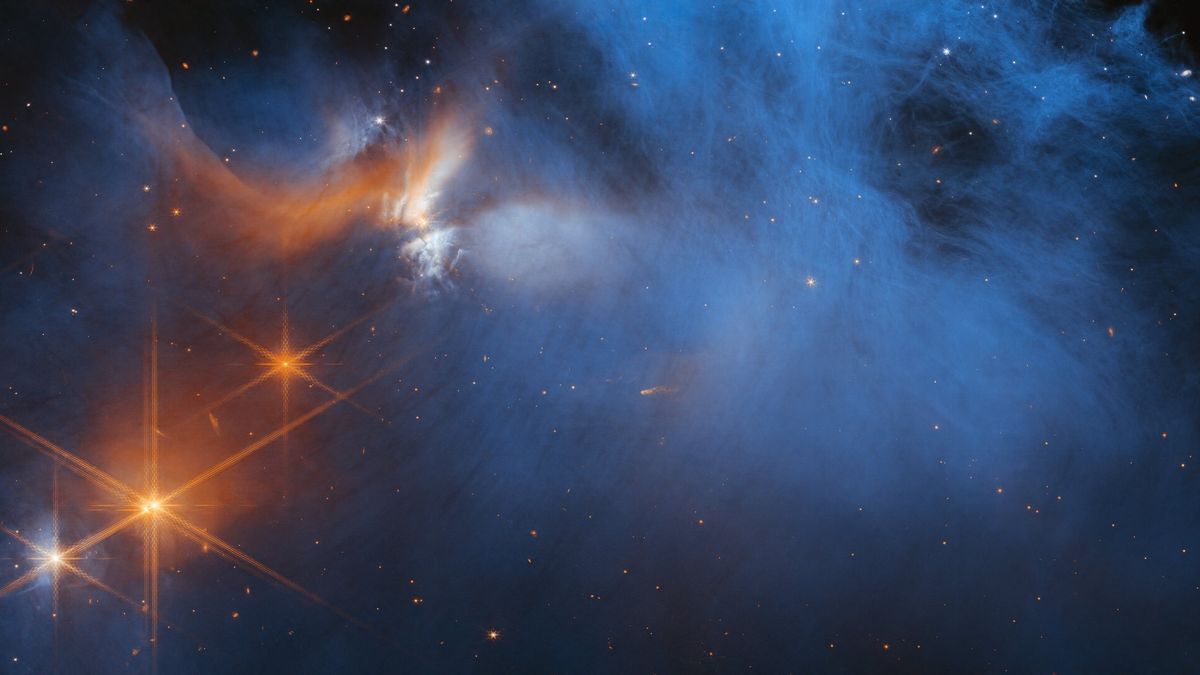Scientists using the James Webb Space Telescope (JWST) have observed and measured the coldest ice in the deepest reaches of an interstellar molecular cloud to date. The frozen molecules measured minus 440 degrees Fahrenheit (minus 263 degrees Celsius), according to new research published Jan. 23 in the journal Nature Astronomy (opens in new tab).
Molecular clouds, made up of frozen molecules, gasses and dust particles, serve as the birthplace of stars and planets — including habitable planets, like ours. In this latest research, a team of scientists used the JWST’s infrared camera to investigate a molecular cloud called Chameleon I, about 500 light-years from Earth.
Within the dark, cold cloud, the team identified frozen molecules like carbonyl sulfur, ammonia, methane, methanol and more. These molecules will someday be a part of the hot core of a growing star, and possibly part of future exoplanets, according to the researchers. They also hold the building blocks of habitable worlds: carbon, oxygen, hydrogen, nitrogen and sulfur, a molecular cocktail known as COHNS.
Related: 19 Jaw-dropping James Webb Space Telescope images
“Our results provide insights into the initial, dark chemistry stage of the formation of ice on the interstellar dust grains that will grow into the centimeter-sized pebbles from which planets form,” lead study author Melissa McClure (opens in new tab), an astronomer at Leiden Observatory in the Netherlands, said in a statement (opens in new tab).
A dusty nursery
Stars and planets form within molecular clouds like Chameleon I. Over millions of years, the gases, ices and dust collapse into more massive structures. Some of these structures heat up to become the cores of young stars. As the stars grow, they sweep up more and more material and get hotter and hotter. Once a star forms, the leftover gas and dust around it form a disk. Once more, this matter starts to collide, sticking together and eventually forming larger bodies. One day, these clumps may become planets. Even habitable ones like ours.
“These observations open a new window on the formation pathways for the simple and complex molecules that are needed to make the building blocks of life,” McClure said in the statement.

The JWST sent back its first images in July 2022, and scientists are currently using the $10 billion telescope’s instruments to demonstrate what kinds of measurements are possible. To identify molecules within Chameleon I, researchers used light from stars lying beyond the molecular cloud. As the light shines towards us, it is absorbed in characteristic ways by the dust and molecules inside the cloud. These absorption patterns can then be compared to known patterns determined in the lab.
The team also found more complex molecules they can’t specifically identify. But the finding proves that complex molecules do form in molecular clouds before they’re used up by growing stars.
“Our identification of complex organic molecules, like methanol and potentially ethanol, also suggests that the many star and planetary systems developing in this particular cloud will inherit molecules in a fairly advanced chemical state,” study co-author Will Rocha (opens in new tab), an astronomer at Leiden Observatory, said in the statement. “
Although the team was thrilled to observe COHNS within the cold, molecular soup, they didn’t find as high a concentration of the molecules as they were expecting in a dense cloud like Chameleon I. How a habitable world like ours got its icy COHNS is still a major question among astronomers. One theory is that COHNS were delivered to Earth via collisions with icy comets and asteroids.
“This is just the first in a series of spectral snapshots that we will obtain to see how the ices evolve from their initial synthesis to the comet-forming regions of protoplanetary disks,” McClure said in the statement. “This will tell us which mixture of ices — and therefore which elements — can eventually be delivered to the surfaces of terrestrial exoplanets or incorporated into the atmospheres of giant gas or ice planets.”
Stay connected with us on social media platform for instant update click here to join our Twitter, & Facebook
We are now on Telegram. Click here to join our channel (@TechiUpdate) and stay updated with the latest Technology headlines.
For all the latest For Top Stories News Click Here

